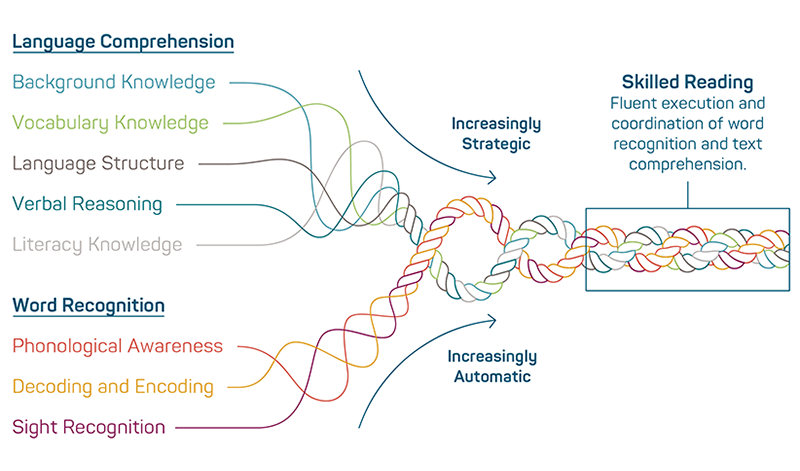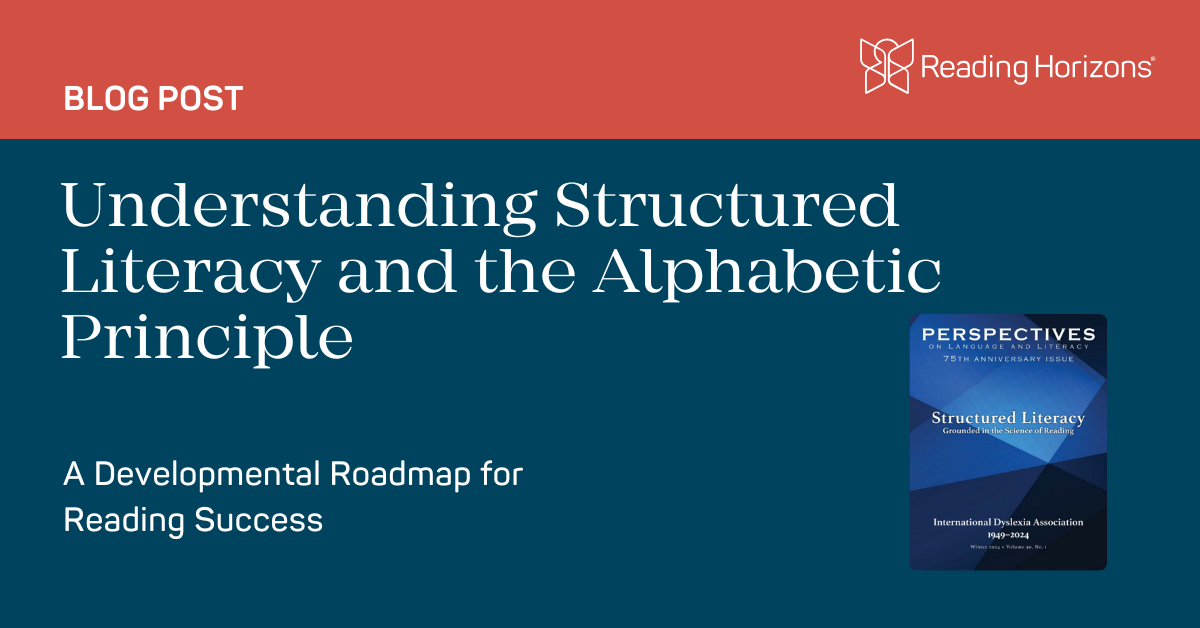A Developmental Roadmap for Reading Success
Literacy instruction is often oversimplified as a linear process bound by grade-level expectations and standardized benchmarks. Yet, as explored in the Literacy Talks podcast (Season 7, Episode 7), the journey toward reading proficiency is complex, developmental, and deeply individual. This episode, featuring Donell Pons, Stacy Hurst, and Lindsay Kemeny, takes a deep dive into Linnea Ehri’s article, Developing Word Reading and Spelling Skills with a Structured Literacy Approach, from the 75th Anniversary Edition of Perspectives on Language and Literacy.
Why Reading Is Not “Natural”
The conversation opens with acknowledging that learning to read is not automatic or instinctive. As first-grade teacher Lindsay Kemeny shares, her early assumptions about reading development were shaped by outdated models:
I just thought it happened… I would read to them a lot, and they would learn to read. And the thing is, for a small portion of students, that’s really true. But for so many more, it’s much more complex.
Ehri’s work reminds us that attaining reading proficiency is a complex process involving learning and integrating knowledge and skills that emerge and grow over time. This nuanced understanding is critical for educators, especially since many only work with students for a single year. It challenges the notion that reading development fits neatly into one grade level.
The Power of the Alphabetic Principle
The alphabetic principle is at the heart of Ehri’s article, and in this episode, letters and letter combinations (graphemes) represent spoken language’s sounds (phonemes). Structured Literacy programs build on this principle by teaching phoneme-grapheme correspondences explicitly and systematically.
This approach supports students in transitioning from early recognition of environmental print (like a stop sign or cereal box) to decoding unfamiliar words through a firm grasp of phonics. Stacy Hurst highlights the misconception that educators should linger in this pre-alphabetic phase:
I was led to believe we did want to spend time on this. And so I had students bring… the name of their favorite cereal… I wasted a lot of instructional time.
Instead, structured literacy aims to swiftly move students from surface-level recognition to deep orthographic mapping, the internal process of bonding phonemes to graphemes for long-term word memory.
Instruction That Respects Developmental Timing
Ehri’s developmental framing also aligns with Hollis Scarborough’s Reading Rope, a model frequently referenced throughout the episode. It visualizes reading as integrating multiple strands—decoding, vocabulary, and comprehension—each developing over time.
Educators often shortchange this timeline. Hurst emphasizes the value of “student-managed reading and writing practice,” a concept that Ehri also names:
Teacher-managed structured reading and writing instruction, and student-managed reading and writing practice.
Kemeny underscores this idea by explaining how instruction should be dynamic and tiered. Some students need more intensive support in specific areas of the rope—like phonological awareness or vocabulary—while others may just need additional practice.

The Role of Tiered Supports and Dynamic Instruction
Dynamic tiered systems like MTSS (Multi-Tiered System of Supports) are only effective when informed by an understanding of how reading skills develop over time. Without that, educators may overlook key interventions—especially for older students.
Pons, who works extensively with middle and high schoolers, explains the long-term impact:
They’re using inefficient, ineffective habits… because they didn’t have the skills that they needed. I get to see the end result of over time not getting the help that you need.
Too often, secondary educators assume students arrive with foundational literacy skills. Reframing reading development as phase-based rather than grade-bound can help teachers spot and address lingering gaps.
Rethinking Spelling Instruction
Spelling instruction is another area where traditional practices fall short. Kemeny reflects on the outdated model of assigning word lists without meaningful instruction:
I did not teach spelling. I assigned spelling… It’s on me now. If they don’t do well on Friday, then I’ve got to reteach it.
Ehri advocates for instruction that teaches students to segment spoken words into phonemes and map them to graphemes, even in spelling. This explicit instruction strengthens decoding, encoding, and long-term retention.
Why Decodable Texts Matter (But Only Temporarily)
A major takeaway from the episode is the appropriate use of decodable or “controlled” texts. These texts are designed to give students practice with phonics patterns they’ve been explicitly taught.
Decodable texts provide scaffolding that can build confidence, especially for struggling readers. But as Kemeny warns, they are not a forever solution:
We are overcorrecting. It doesn’t mean now that we only give students decodables… The goal is to transition away from them.
Stacy Hurst adds that calling them “controlled texts” helps clarify their purpose—they’re temporary training wheels, not permanent instruction tools.
Addressing the Consolidated Phase of Reading
The episode wraps up with a discussion on the consolidated alphabetic phase, a lesser-known but crucial stage where readers begin to recognize syllables, morphemes, and larger units of meaning. It’s often overlooked in instruction or, conversely, introduced too early (like through word families before phonics has been mastered).
Pons sees many older students “stuck” at this phase because they never had the chance to master earlier steps. Hurst says this phase is a natural outcome of intense foundational instruction for others. In both cases, it must be recognized and supported.
All Words Become Sight Words
One of the most powerful reframes offered by Ehri—and celebrated by the hosts—is the idea that all words become sight words through practice and orthographic mapping, not memorization:
All words become sight words read from memory once readers practice reading them, making text reading much easier.
This quote encapsulates the episode’s core message: skilled reading is the integration of many strands—phonics, morphology, fluency, vocabulary, and comprehension—all woven together with time, instruction, and practice.
Final Thoughts
This episode of Literacy Talks offers a rich exploration of structured literacy through the lens of Linnea Ehri’s work. From foundational phoneme-grapheme instruction to spelling, decoding, and beyond, it paints a holistic, developmentally sound portrait of what reading instruction should look like—and why it matters.
Educators who embrace this structured, phase-based model not only support struggling readers—they empower all students with a path to lifelong literacy.

